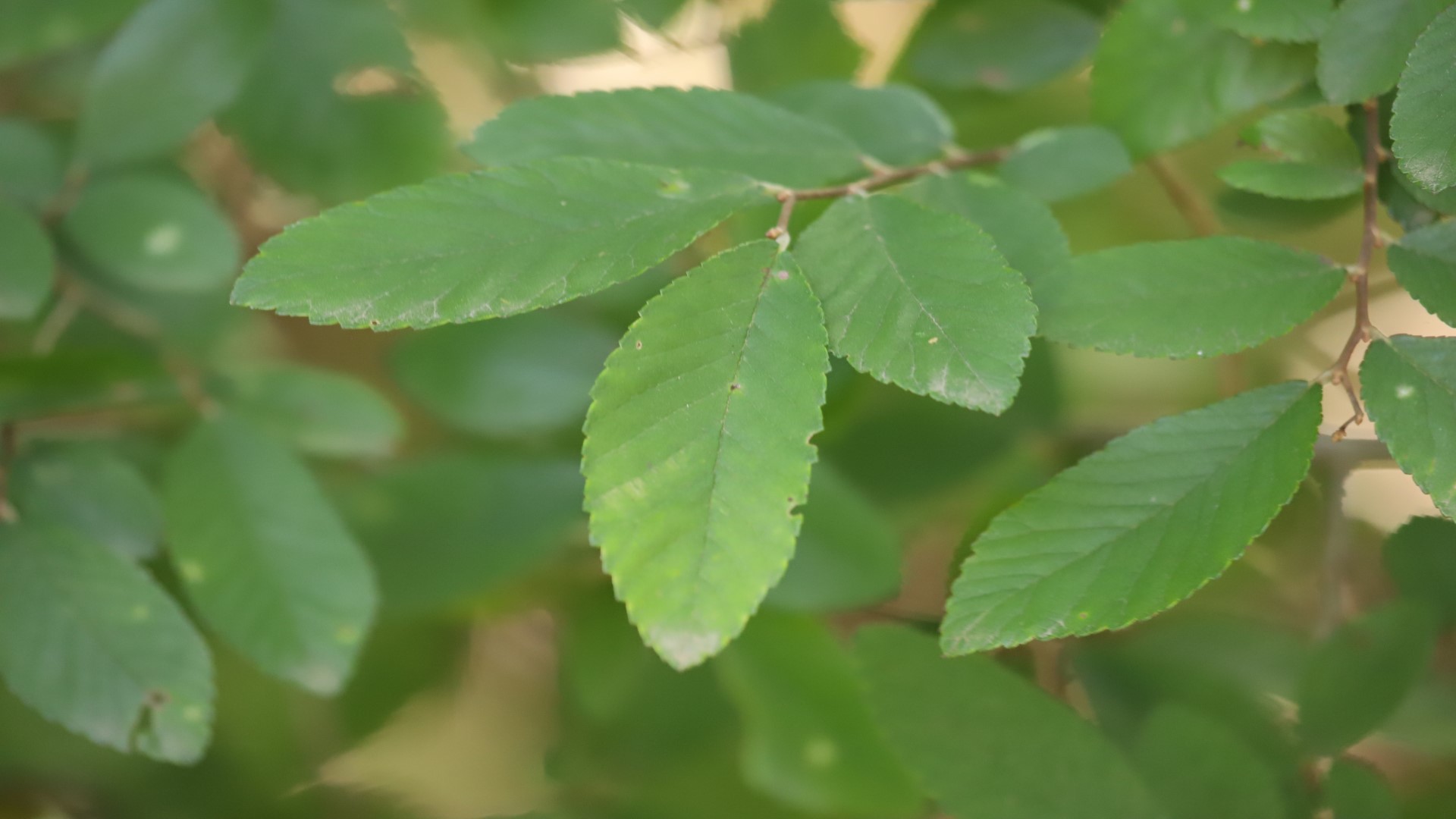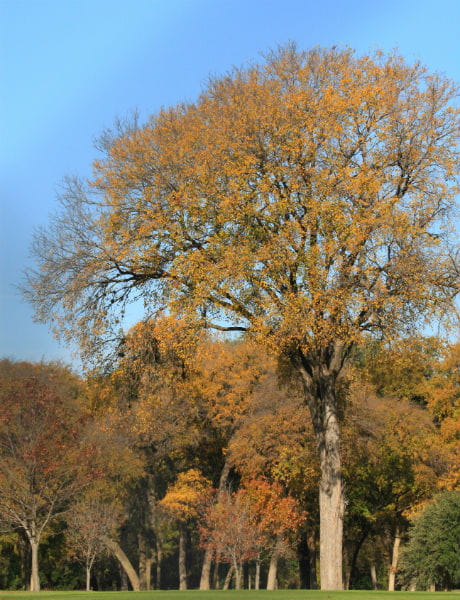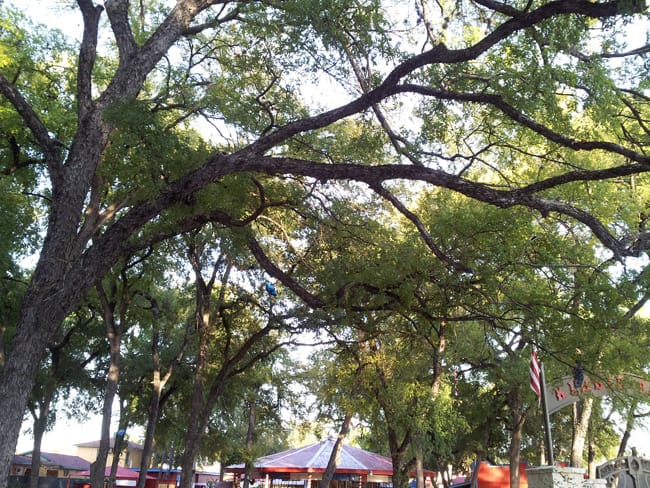Sun or shade; deciduous. Cedar elm is tall, tough, and adaptable as to soil type; its small, rough leaves, twining branches, and oval canopy are easily recognized throughout south-central Texas. No other local elm flowers and sets seed in the fall; the leaves provide nice yellow fall color.
Cedar elm tolerates both thin rocky soils and poorly drained clay, as well as urban conditions and root compaction; it is often employed as a street tree.
Pruning helps to maintain a healthy specimen, especially around cars and close to buildings; cedar elm tends to drop branches during high winds. Focus on minimizing the number of dead, damaged, or rubbing limbs and removing co-dominant branching. As with any tree, remove no more than 25% of the canopy during any five-year cycle.


